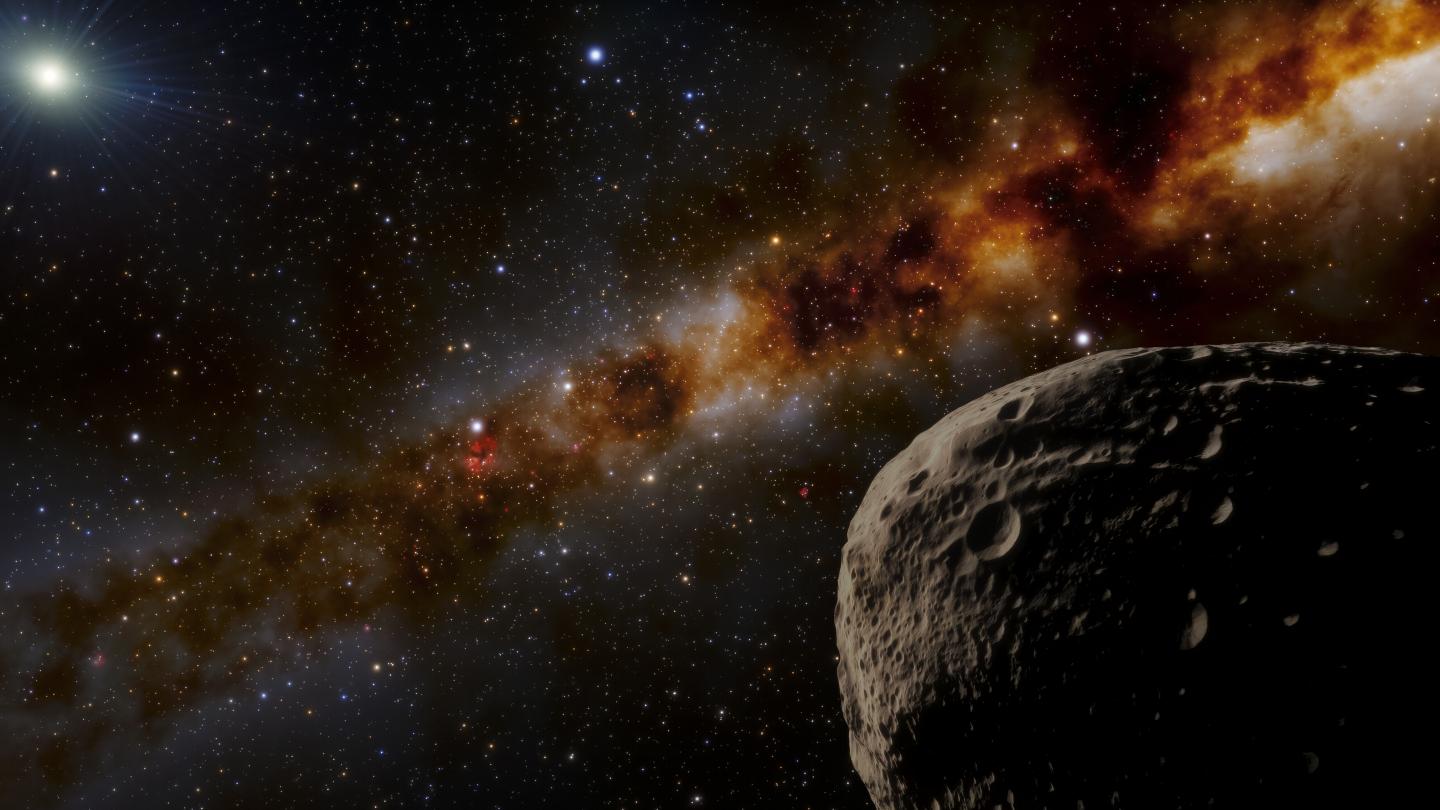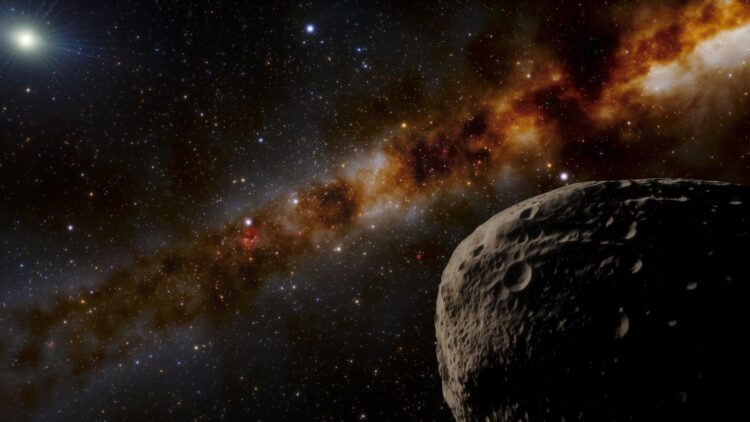
Credit: NOIRLab/NSF/AURA/J. da Silva
With the help of the international Gemini Observatory, a Program of NSF’s NOIRLab, and other ground-based telescopes, astronomers have confirmed that a faint object discovered in 2018 and nicknamed “Farfarout” is indeed the most distant object yet found in our Solar System. The object has just received its designation from the International Astronomical Union.
Farfarout was first spotted in January 2018 by the Subaru Telescope, located on Maunakea in Hawai’i. Its discoverers could tell it was very far away, but they weren’t sure exactly how far. They needed more observations.
“At that time we did not know the object’s orbit as we only had the Subaru discovery observations over 24 hours, but it takes years of observations to get an object’s orbit around the Sun,” explained co-discoverer Scott Sheppard of the Carnegie Institution for Science. “All we knew was that the object appeared to be very distant at the time of discovery.”
Sheppard and his colleagues, David Tholen of the University of Hawai’i and Chad Trujillo of Northern Arizona University, spent the next few years tracking the object with the Gemini North telescope (also on Maunakea in Hawai’i) and the Carnegie Institution for Science’s Magellan Telescopes in Chile to determine its orbit. [1] They have now confirmed that Farfarout currently lies 132 astronomical units (au) from the Sun, which is 132 times farther from the Sun than Earth is. (For comparison, Pluto is 39 au from the Sun, on average.)
Farfarout is even more remote than the previous Solar System distance record-holder, which was discovered by the same team and nicknamed “Farout.” Provisionally designated 2018 VG18, Farout is 124 au from the Sun.
However, the orbit of Farfarout is quite elongated, taking it 175 au from the Sun at its farthest point and around 27 au at its closest, which is inside the orbit of Neptune. Because its orbit crosses Neptune’s, Farfarout could provide insights into the history of the outer Solar System.
“Farfarout was likely thrown into the outer Solar System by getting too close to Neptune in the distant past,” said Trujillo. “Farfarout will likely interact with Neptune again in the future since their orbits still intersect.”
Farfarout is very faint. Based on its brightness and distance from the Sun, the team estimates it to be about 400 kilometers (250 miles) across, putting it at the low end of possibly being designated a dwarf planet by the International Astronomical Union (IAU).
The IAU’s Minor Planet Center in Massachusetts announced today that it has given Farfarout the provisional designation 2018 AG37. The Solar System’s most distant known member will receive an official name after more observations are gathered and its orbit becomes even more refined in the coming years.
“Farfarout takes a millennium to go around the Sun once,” said Tholen. “Because of this, it moves very slowly across the sky, requiring several years of observations to precisely determine its trajectory.”
Farfarout’s discoverers are confident that even more distant objects remain to be discovered on the outskirts of the Solar System, and that its distance record might not stand for long.
“The discovery of Farfarout shows our increasing ability to map the outer Solar System and observe farther and farther towards the fringes of our Solar System,” said Sheppard. “Only with the advancements in the last few years of large digital cameras on very large telescopes has it been possible to efficiently discover very distant objects like Farfarout. Even though some of these distant objects are quite large — the size of dwarf planets — they are very faint because of their extreme distances from the Sun. Farfarout is just the tip of the iceberg of objects in the very distant Solar System.”
###
Notes
[1] The Gemini North observations of Farfarout were done on 1 May and 2 May 2019 Universal Time, using Director’s Discretionary Time.
More information
NSF’s NOIRLab (National Optical-Infrared Astronomy Research Laboratory), the US center for ground-based optical-infrared astronomy, operates the international Gemini Observatory (a facility of NSF, NRC-Canada, ANID-Chile, MCTIC-Brazil, MINCyT-Argentina, and KASI-Republic of Korea), Kitt Peak National Observatory (KPNO), Cerro Tololo Inter-American Observatory (CTIO), the Community Science and Data Center (CSDC), and Vera C. Rubin Observatory (in cooperation with DOE’s SLAC National Accelerator Laboratory). It is managed by the Association of Universities for Research in Astronomy (AURA) under a cooperative agreement with NSF and is headquartered in Tucson, Arizona. The astronomical community is honored to have the opportunity to conduct astronomical research on Iolkam Du’ag (Kitt Peak) in Arizona, on Maunakea in Hawai?i, and on Cerro Tololo and Cerro Pachón in Chile. We recognize and acknowledge the very significant cultural role and reverence that these sites have to the Tohono O’odham Nation, to the Native Hawaiian community, and to the local communities in Chile, respectively.
Links
University of Hawai’i press release
NAOJ/Subaru press release
Minor Planet Circular 2021-C187
Photos of Gemini North telescope
2018 talk mentioning Farfarout by Scott Sheppard
“Beyond Pluto: the Hunt for a Massive Planet X”
Contacts
Scott Sheppard
Earth and Planets Laboratory
Carnegie Institution for Science
Tel: +1 202-478-8854
Email: [email protected]
David Tholen
University of Hawai’i
Email: [email protected]
Chad Trujillo
Northern Arizona University
Email: [email protected]
Amanda Kocz
Press and Internal Communications Officer
NSF’s NOIRLab
Cell: +1 626-524-5884
Email: [email protected]
Media Contact
Amanda Kocz
[email protected]
Original Source
https:/





